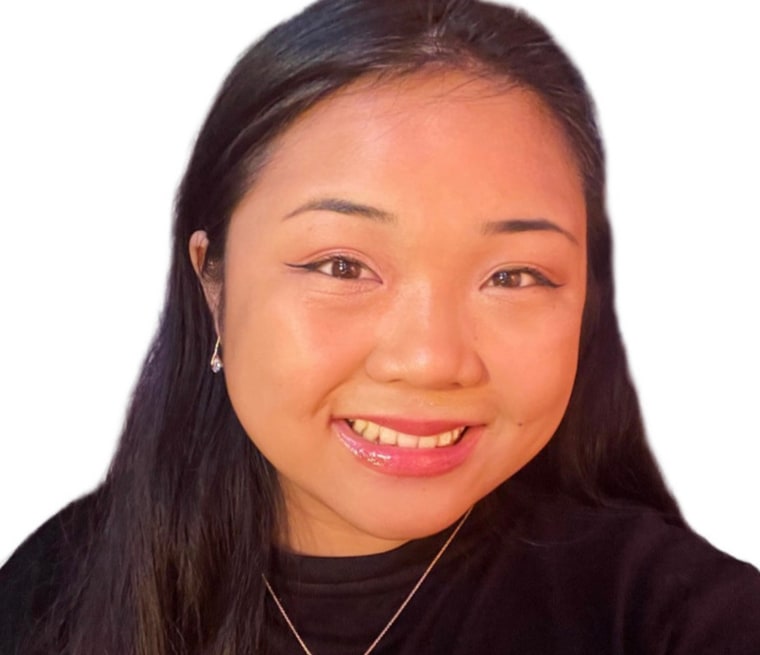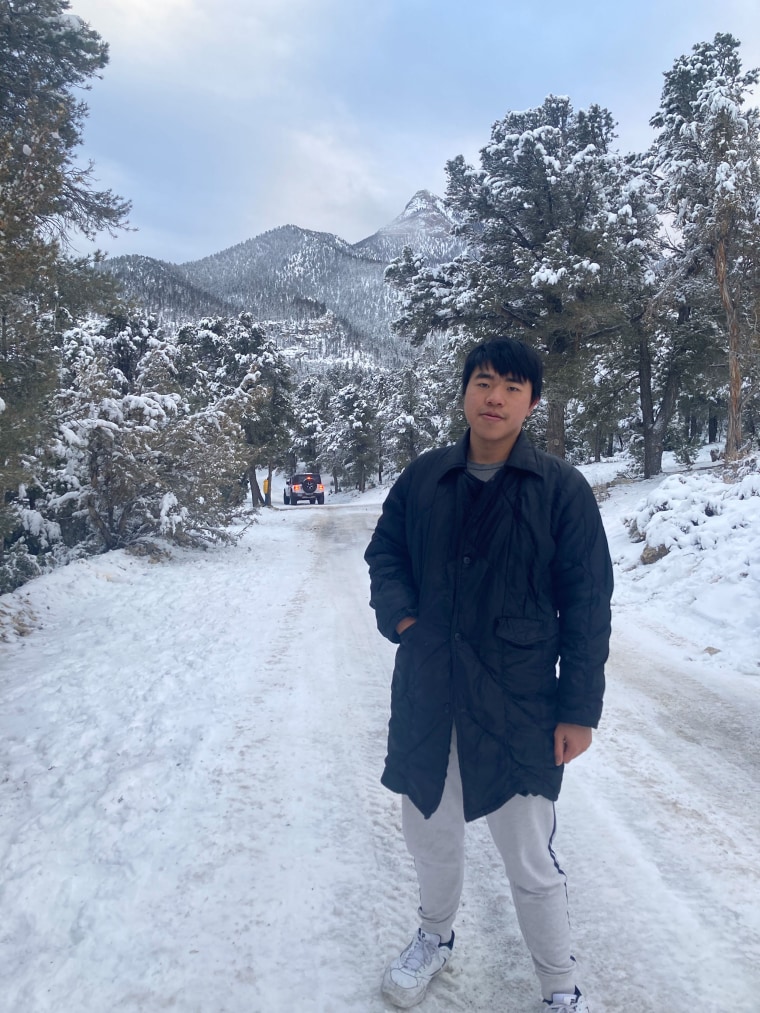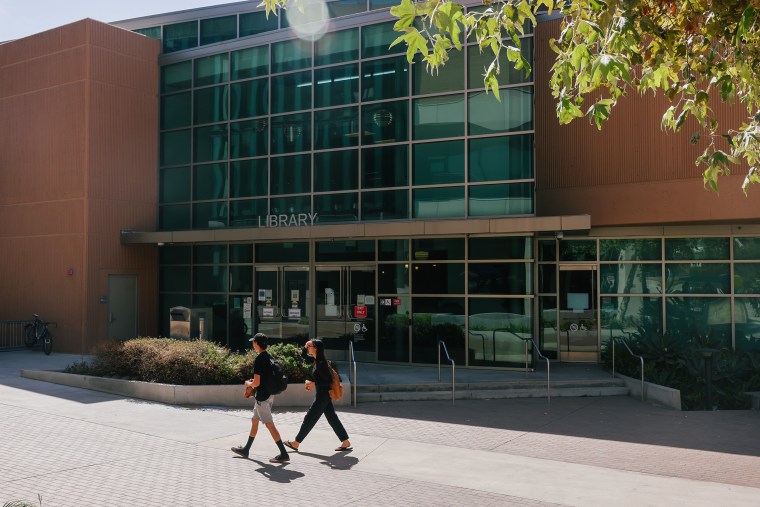Angelynn Jimenez, 18, a Filipina American who attends community college in Chicago, said she was concerned about the Supreme Court striking down affirmative action because she’s seen how beneficial programs for socioeconomically-diverse students truly are. The policy has helped her get scholarships to STEM programs in high school, and enroll in community volunteering programs in college, before she plans to transfer to a four-year school and major in public policy.
“We don’t choose where we’re born,” said Jimenez, who goes to Wilbur Wright College and grew up in a low-income household. “Maybe someone was super lucky. And they were born into a private school and tutors, so that’s the reason why they get into this institution, versus someone who maybe didn’t have that.”

While the debate over race-conscious admissions often centers Asian Americans with the means to go to a highly selective, prestigious private university, a higher share of the group goes to community college. In California, for example — the state with the highest population of the racial group — 41% of Asian American freshman in 2020 enrolled at community colleges. Following Thursday’s ruling, Asian American low-income and community college students say that they are contending with a range of emotions, from concern to relief, but all said they are uncertain of what the future could look like.
For students attending community college, many use it as a springboard to pay for general credits and then transfer to a four-year institution. And many students look to affirmative action policies to help them get into the more selective schools.
The level of education across the diaspora is diverse. Southeast Asian Americans, for example, contend with poverty and subsequently lower rates of educational attainment largely as a result of their experiences as refugees, said Kham Moua, national deputy director of the Southeast Asia Resource Action Center. Data shows that 29% of Vietnamese, 18% of Laotian and 16% of Cambodian American adults have bachelor’s degrees or higher, compared to 54% of Asian Americans overall.
For Asian American groups that already struggle with access to higher education, many experts say the loss of race-conscious admissions could widen disparities.
“High-quality education has traditionally followed along racial lines, that without race-conscious admissions, it would reverse access to more prominent institutions,” Moua said. “By striking affirmative action, we’re replicating barriers for students of color who’ve been historically underrepresented in colleges and universities.”
Kham said that many Southeast Asian Americans who do pursue higher education overwhelmingly go to state or community colleges, rather than Ivy Leagues or high-profile schools. So widening access across all types of institutions has been a deep concern, he said.
“For Southeast Asian students, a lot of the conversation around access is just making sure that they’re even able to have the resources to attend any sort of university,” he said.
Mercuri Lam, a Chinese American rising high school senior who uses they/them pronouns, attends boarding school with the help of financial aid and a scholarship. They said affirmative action has aided not only their high school experience but also their search for potential colleges. Some selective schools offer “fly-in” programs, for example, that allow students from first-generation, low-income or other marginalized backgrounds to visit on their dime.

“I’m very lucky to be able to qualify for fly-ins because I wouldn’t have had the chance to visit schools otherwise. And that in itself is trying to give more space to those people who are marginalized,” Lam said. “That in itself is a part of what affirmative action aims to be — it’s to erase inequality in these very historically inherently privileged white institutions.”
Opinions across the racial group have been mixed and complex. Pew Research Center found that most Asian Americans who have heard of the policy say it’s “a good thing,” at 53%, while 19% say it’s a “bad thing.” But 21% of Asian adults say colleges should consider race and ethnicity when deciding which students to accept. A 2022 survey from the nonprofit group APIAVote, which polled registered Asian American voters, found 69% favored affirmative action programs “designed to help Black people, women, and other minorities get better access to higher education.”
Still, some low-income students have had their concerns about the admissions policy. Emily Fu, 19, a Chinese American freshman at East Los Angeles College, said she opposes affirmative action. Fu, who’s from a low-income household, said she isn’t confident that admissions officers would have the ability to see Asian American applicants as individuals, obscuring the qualities that make them qualified.
“Even if they don’t say it, the thought could be in the back of their head,” she said. “There’s that stereotype I see about how Asians get a 4.0 and 10 extracurriculars … and it basically looks very similar to other applications.”
Fu, the daughter of Chinese restaurant workers, said the conversation around higher education has been skewed away from low-income students like herself.
“The education debate should not be primarily focused on privates,” she said. “It definitely hurts lower-income Asians because they don’t have the same resources, access and education.”

Champ Liudi, 19, who also attends ELAC, similarly opposed affirmative action policies. Liudi, an Indonesian American freshman who’s also from a low-income family, said he feels that affirmative action policies could lead to “generalizing” of Asian Americans.
“I don’t think it addresses the root cause of the problem, which could sometimes be generational poverty,” he said.
Liudi added that an admissions policy based on income is “more preferable.”
“Low-income households would likely not have the privilege to achieve high scores or do extracurricular in school due to being unable to afford tuition or provide time other than working or providing for families,” he said.
Asian American groups point out that the ruling might remove the consideration of race in admissions, but other diversity programs continue to exist. And many say they plan to hold schools accountable in creating opportunities for students of color.
“The Court’s decision is a major setback for the ability of colleges and universities to create true equality in education,” Chinese for Affirmative Action, a nonprofit organization, said in a statement. “However, it is important to recognize that the ruling is strictly limited to race-conscious admissions, and not other important measures such as targeted outreach and recruitment, or ensuring more diverse faculty and college leadership.”
